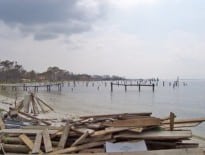The recent announcement that Amazon is seeking to construct a new, $5 billion East Coast headquarters that will employ as many as 50,000 people has set off a new frenzy within the business community, as well as state and local governments. Pronouncements that Boston will compete for this opportunity, and that Amazon is considering Boston as a site, have added fuel to the fire. This clamor follows not so far behind the city’s failed attempt to secure the Olympics in Boston. Unfortunately, the clamor demonstrates that we learned very little from the Olympic dream experience.
It is important to acknowledge that Boston’s global ascendancy is real. The movement of multiple corporate headquarters into Boston, crowned by General Electric’s ongoing relocation from Connecticut, has proven that large corporations want to be here. The synergy created by the confluence of talent, technology and research is very hard to resist. With the support of a vibrant cultural community and a high quality of life, Boston is competitive for any major corporate headquarters. It is this very agglomeration, with the sum being greater than its parts, that makes Boston a destination for corporate America.
As a result of this allure to come to Boston, corporations come to visit and test the waters. Almost all of the things they expect to find are here, expect one: a functioning transportation system. We have been wildly successful at luring world class corporate headquarters into Boston, but have made absolutely no progress in developing a world-class transportation system to sustain our new corporate residents.
This is abundantly evident in the Seaport District. With very few ways to get in and out of the Seaport, the congestion continues to build as companies like GE, Vertex and Reebok lead the migration of corporate America into Boston. Having followed their instincts to locate in a vibrant, mixed-use neighborhood with the right technological synergy and savvy, they must find themselves deeply frustrated by the lack of investment in mobility systems to get their employees to and from their gleaming new facilities.
The lack of corresponding investment in transportation infrastructure is notable. The Northern Avenue bridge (one of only a handful of major arteries into the district) is closed and will not reopen for many years because construction funding has not been identified. In addition, there has been no significant investment in transit infrastructure since the district has experienced more than 10 million square feet and counting. To say that the pace of development without further investment in mobility is unsustainable would be an understatement.
The Seaport District is one of just many areas in Greater Boston where companies want to locate, but where there is not adequate transportation infrastructure. Kendall Square in Cambridge is another example of the tech phenomenon experiencing the same squeeze due to inadequate transportation infrastructure. Both neighborhoods command some of the highest real estate values in the country – and serve as a homing beacon for a corporate clientele that demands the business climate that Boston has created. But, as it stands, the promise cannot be fully realized.
Cue The Amazon Derby
Amazon’s arrival on the scene as a potential suitor for Boston has led to wild speculation from all quarters about where such a large campus could be built. The word is that Amazon wants to build someplace with access to reliable transit and in proximity to the deep pool of human capital that has become the calling card of the Boston region. This is a tough order for a city that has a transportation system that is simply limping along, at present, with little new growth planned or underway.
This leads us back to the question of what lessons can be learned from the corporate headquarters derby. Rather than offering corporations huge tax breaks and incentives to relocate, perhaps we should invest in transportation systems that would beckon them to Boston – simply because it is the best place to locate. There may still be some incentives involved, but the hard decisions about mobility will no longer be a factor for the decision makers in corporate America.
If Boston wants to be a world class city and host the corporate headquarters of the new digital economy, we need to get serious about investing in transportation systems. We cannot cobble together a bunch of infrastructure incentives when large corporations come knocking and hope that this will be enough to convince them to come. These companies are more sophisticated than that, and know when disinvestment in infrastructure is going to be a long-term liability. We need a robust transportation infrastructure, that is ready and waiting for these new employment opportunities, increasing the pull on corporate America and creating the gravity that will be undeniable for the economy of the future. That is the way to make Boston the Hub of the Universe.
William F. Lyons Jr. is president of Fort Hill Cos. of Boston.




 |
| 


